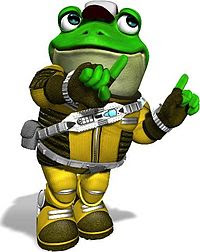After 15 years in development hell, the long-awaited sequel to Duke Nukem 3D was finally released in 2011. Duke Nukem Forever, which was first teased back in 1997, is exactly the kind of game you'd expect would come out of a nightmarish 15-year-long development process that included lay-offs and ugly lawsuits: a messy, uneven, schizophrenic shooter that embraces elements from two very different generations of video games, but belongs to neither. It's painfully obvious now that Duke Nukem, who once upon a time symbolized the freedom (and freedom of expression) of video games has become a relic who can't compete with current-generation shooters like Halo and Call of Duty. Duke Nukem Forever wasted a golden opportunity to resurrect an older breed of first-person shooter, reinstall Nukem as a noteworthy pop culture figure, and poke fun at a genre that has become too bloated, too stale, and too uniform for its own good.
Duke Nukem Forever (DNF) takes place 12 years after the events of Duke Nukem 3D. The titular hero Duke, who's best described as a wise-cracking, gun-totting, libidinous macho man, has achieved world-wide acclaim for his heroic deeds. When aliens once again invade Earth (you'd think they would have learned their lesson), it's up to Duke to save the day, causing as much collateral damage as possible. It's difficult to fault DNF for its paper-thin plot, if only because story has never been important in the series. However, that fact doesn't excuse the other failures of Duke Nukem Forever, most notably its action, which is flat and joyless; its script, which is humorless and misogynistic to the extreme; and its technical limitations.
 |
| This should me more fun than it is. |
First, let me say that Duke Nukem belongs (or belonged) to a generation of first-person shooters that seem to have disappeared from the video game industry. Defined by their fast pace, huge arsenal of unrealistic weapons, and a singular focus on arcade-style action at the expense of story and character development, these shooters dominated the early and mid-90s. Examples include Wolfenstein 3D, Doom, Quake, Duke Nukem 3D, and Rise of the Triad, to name a few. While the spirit of DNF resides with its 1996 predecessor and with others of that generation, it plays like a modern shooter. Duke is limited to only two guns at a time; he must solve puzzles and avoid traps; his health regenerates; and his normal run-and-gun action is frequently interrupted by platforming and driving sections -- all hallmarks of the current generation of shooters. Several times during the game, Duke makes disparaging comments, aimed at games like Halo and Half-Life, but that doesn't change the fact that his game uses the same mechanics. Yet, unlike games like Halo and Half-Life, which feature memorable set-pieces and dynamic action, DNF features boring, uninspired levels and some very flat shooting. Firing a weapon is a dull affair. Bullet and laser beams leave the weapon with no impact. Enemies barely react to getting shot, then simply keel over once defeated.
 |
| Out of the frying pan, into the fryer. |
Strangely, the best action in DNF comes from its non-shooting stages. The most fun I had in the game was a segment in Duke Burger heavy of platforming action. A shrunken-down Duke must jump across frying pans, shelves, and even burgers on a flattop to reach his objective. It's reminiscent of the unique sense of humor and craziness from Duke Nukem 3D.
When DNF isn't somehow turning the act of shooter lasers at invading space aliens boring, it's trying to revive the sense of humor and sense of impropriety that its predecessor wore like a badge of honor. Duke Nukem 3D was crude, rude, sexist, and gross, but on many levels it was also an ironic, self-aware exaggeration of popular culture in general and action movies and video games in particular. But in DNF all the audience gets are pop culture riffs that are old and tired, an attitude toward women that can only be described as hateful, and a pervasive, debilitating nihilism that poisons the entire game. If Duke doesn't care about anything, why should we?
 |
| I've seen better. |
Then there are the technical limitations in DNF. Controls are fairly responsive, but the graphics are wildly inconsistent. Many characters look blocky, and many textures blurry. Most of the environments are drab, dimly lit, and lacking much detail. It just looks like a low-budget game. Long loading times only make matters worse.
Compared to the single-player experience, which is a huge letdown, especially after 15 years of development, multiplayer in DNF is implemented fairly well. It has all the traditional modes -- deathmatch, capture the flag, etc. -- plus a very intriguing leveling system that rewards players with content that immediately appears in "Duke's Penthouse," a virtual space where players can admire paintings, statues, games, and other surprises earned in multiplayer. It bestows on DNF significant replay value, and it's just a great addition for fans of the Duke Nukem franchise.
 |
| This joke would have been funnier in 2001. |
Still, Duke Nukem Forever is in every way a bargain bin title. If not for its pedigree it surely would have ended there much sooner than it did. Technically and structurally, it's a step backward for first-person shooters. It tries so desperately to be funny, sexy, and provocative, but largely fails on all fronts. It's a shame really. DNF could have been a throwback shooter that 1) delivered some much-needed diversity to the genre and 2) satirized the current kings of the hill: Halo, Call of Duty, Battlefield, etc. In the end, however, it neither resurrected an old-school shooting style nor effectively lampooned its competition. It's just another bad game in a sea of shooters.
Score: 5.0












































